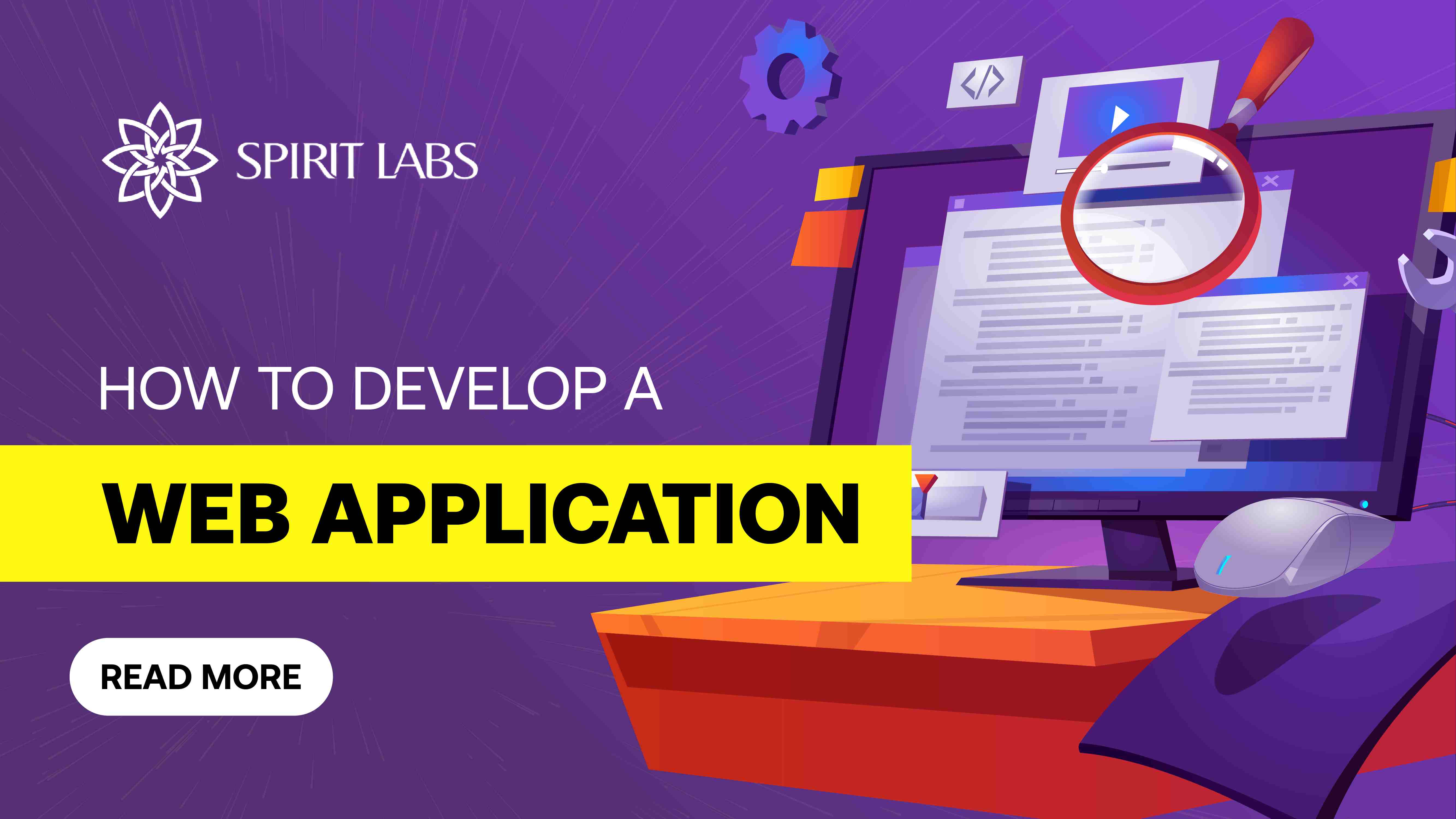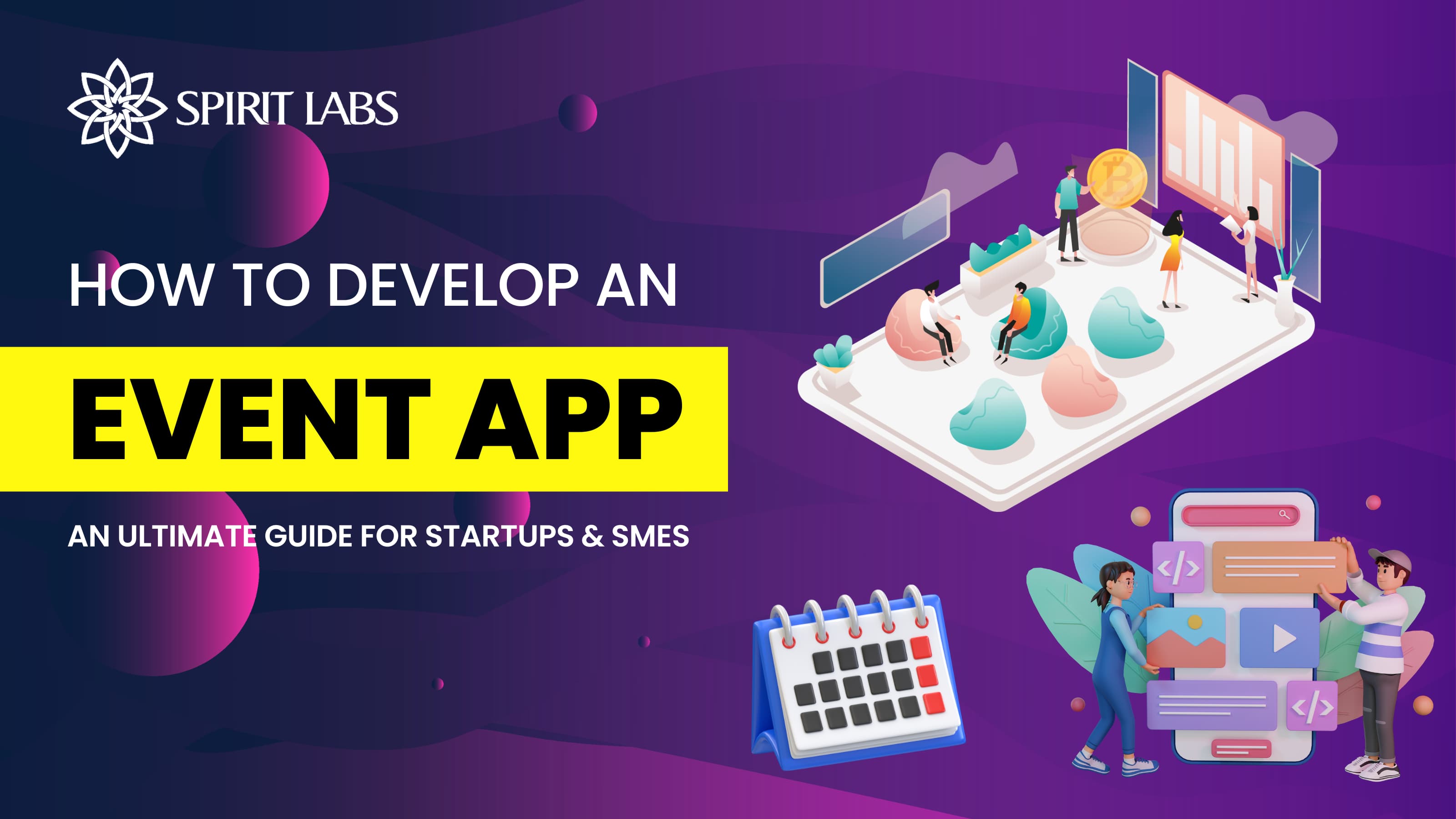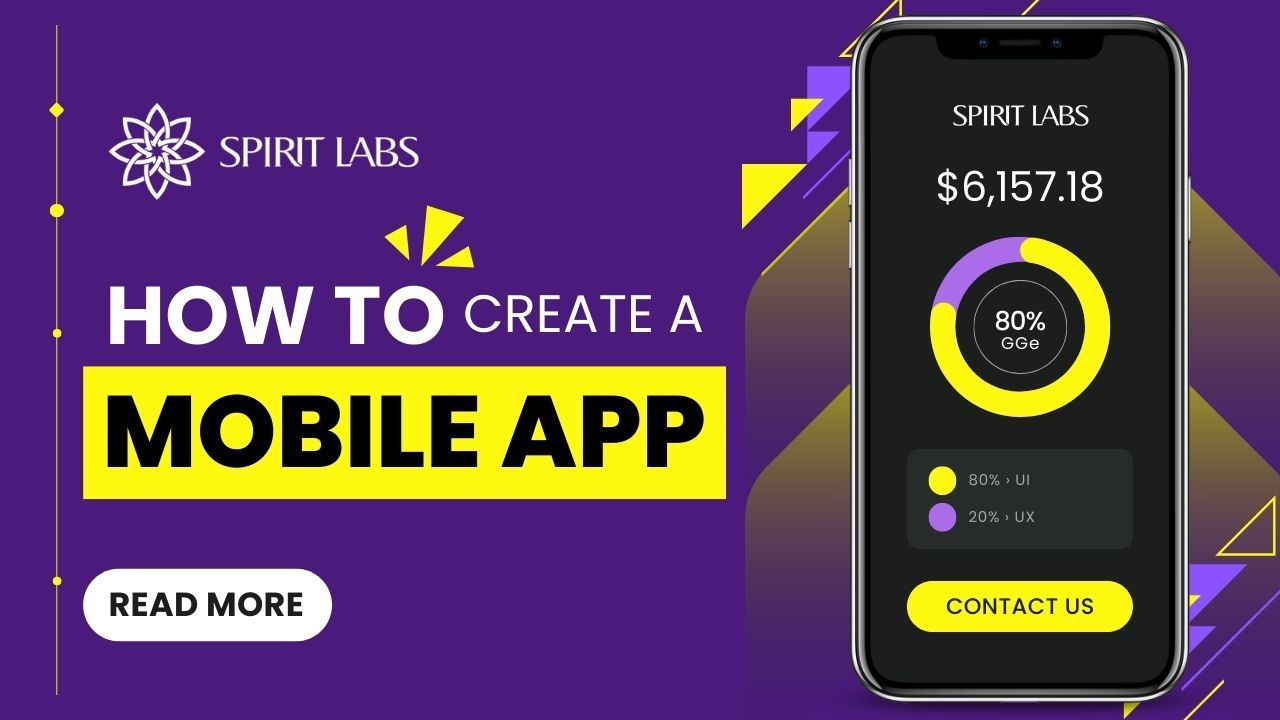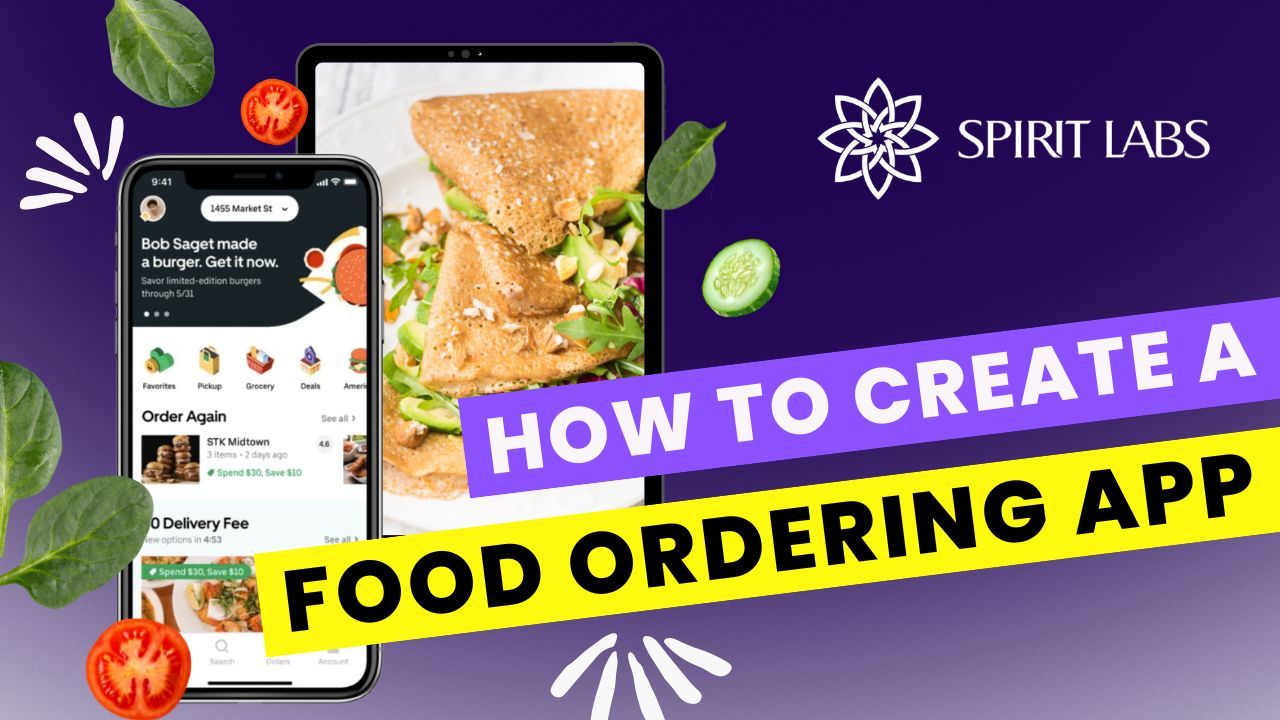
How to Create A Food Ordering App: Essential Features, Business Models
Food ordering apps have contributed by delivering everything without the hassle of moving for consumers. Customer eating behaviors witnessed an exponential change thanks to the development of technology and the pandemic period of Corona. That is why businesses have taken advantage of this demand to build such platforms or join in the market of food application transformation.
Let’s get along with Spirit Labs to break down its parts of HOW TO CREATE A FOOD ORDERING APP for your businesses.
The market of global online food delivery services is forecasted to grow to $159.46 billion at a compound annual growth rate (CAGR) of 5.6% in 2026 (Online Food Delivery Services Global Market Report 2022: By Channel Type, By Payment Method). Moreover, the number of smartphone users witnessed a brief increase to have given a boost to digital food ordering worldwide. Western Europe was the largest region, while Asia Pacific ranked the second position in this market.
The mobile app can be broadly divided into 2 segments of Platform-to-Consumer delivery and Restaurant-to-Consumer delivery. The Platform-to-Customer segment refers to a marketplace where this type of delivery platform manages and provides consumers with meals from partner restaurants. Meanwhile, the Restaurant-to-Consumer delivery focuses on the delivery of food, which is conducted by restaurants without an intermediary.
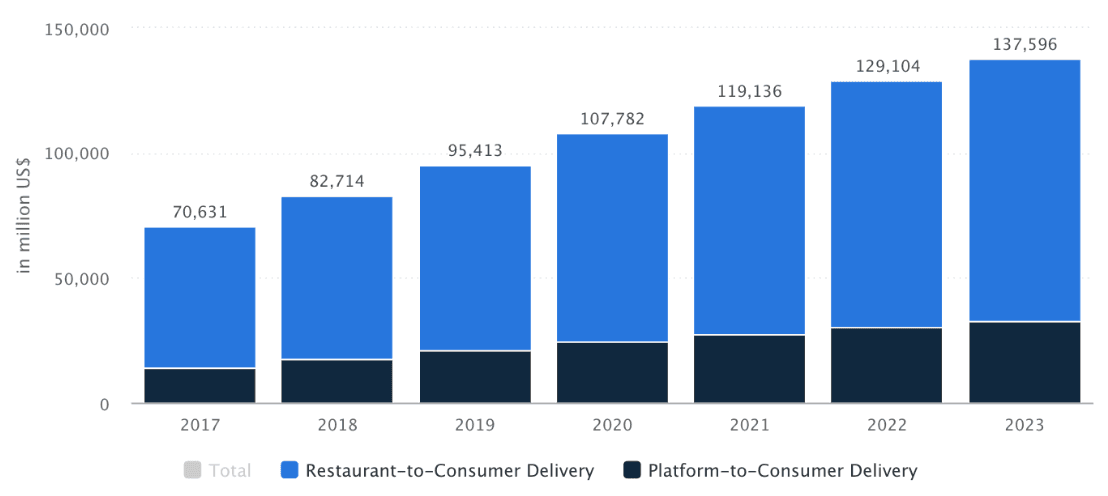
(Statistics for on-delivery services income by Statista)
Therefore, SMEs, startups and entrepreneurs are seen to have opportunities to earn billions of dollars by generating ordering app transformations. However, whether you choose to partner with aggregators, e-commerce companies or develop your own food ordering app, there are some steps and features which are necessary for your modification.
There are some key features to generate on your food ordering app to manage your app, as well as increase customer experience.
Customized Theme
A theme-based ambience helps your restaurant build a fundamental appearance. Next, defining the look of your ordering app includes the flow, layouts, functionalities and colors to distinguish itself from other suppliers in the food app industry.
Menu Management
Menu management is the ability to insert descriptions and appealing food photos along with them to get your customers drooling. This app feature allows users to have more information about their order and somehow increase your sales up by a notch.
Push Notifications
Personalized notifications with customer names would be definitely outstanding on their feeds. They will buy more when they feel valued. Therefore, businesses can start offering exclusive discounts or new product introductions from your platform without any hassle.
Multi Branch
When it is time for your business to scale up, there will be expansion in the outlets all over the place. You are able to run and optimize all of your branches in one application without building a new one for each of them.
Table Reservation If your business is a dine-in restaurant, table reservation is a fixed service. A feature for table reservations is necessarily added instead of receiving phone calls for booking. This tool helps businesses to keep track of the number of guests, VIP and waiting time.
Reporting
The portion of analytics assists to get an overview of your business activities, so you can prepare some next steps to achieve business goals. This function tracks the customer behavior to have a good command of their touch points and insights with the help of statistics and dashboards.
How about user experiences? To reach the top of the food chain in the market, focus on making things easy for the customer. These features below are in charge of luring customers in, remain old one and create a loyal customer base.
Registration or Sign Up
The registration page should be uncomplicated, understandable, and intuitive. Allowing users to sign up using their Facebook or Google accounts will increase engagement.
Personalized Profile Page
Make a special profile page for customers on your food delivery app and instruct them on how to use it. The customer profile must include information about their available coupons or vouchers, order history, and saved payment methods.
Order History
Order history plays a role as an archive to remind users of what they ordered, so they can check their past experiences to know what dishes they liked before and rating scores. It will also help businesses to manage cohorts and increase recurring customers.
Payment Gateway
Payment gateway authorizes credit card or direct payment processing for e-businesses, online retailers etc provided by an e-commerce application service company. If a business can vary payment methods and secure transactions, customers tend to choose your app and make a purchase.
Chatbot Support
Chatbots integration amplified by artificial intelligence in your restaurant app will be helpful as it can take an order, suggest dishes and help with customer queries without or with minimum human interaction. It can also simulate a conversation with a user via messaging applications, websites, mobile apps and even on calls.
Offers and Coupons
Users usually have the intention to choose a food ordering app with discounts and offers on their transactions. That is why your business can create occasional discounts, deals and offers to lure users in and improve recurring customer percentage.
Loyalty Program
Applying loyalty programs in the food ordering app creates more spaces for customers to engage with the application. By utilizing incentives such as reward points, discounts and membership cards, your customers are more likely to interact with your app, which leads to higher conversion rates for your business
Refer and Earn
Refer and Earn feature is an excellent tool to benefit from the worth of mouth. The referral policy assists a rise in the number of users downloading the food ordering app by the utility of invitation.
The exact information about the order must be provided to a courier or delivery person. The admin panel of the restaurant application will send them the notification. Work on adding accurate geo-location and tracking features to your meal ordering app.
Personalized Profile Page
Just like customers, couriers need to identify themselves. Profiles allow couriers to manage their own orders.
Order Management
Delivery personnel can use this function to view all open orders and make reservations. Order details should include the size of the order, the delivery location, and any remarks that customers may have.
Order Status
This feature is needed to connect customers and couriers for tracking their orders. Status updates indicate whether an order has been accepted, picked up, or delivered. This information is then available for the customer and comes in the form of push notifications.
Locations and Routes
Delivery drivers can map out their routes and follow their own locations in real-time using the Google Maps API. This aids them in selecting the quickest routes and avoiding gridlock. The customer's side is also given access to the movement-related data so they can view it in their particular app.
Before creating a food ordering app, you must know the differences between food delivery models which are Order-only Model & Order and Delivery Model, to be able to choose which model is the most suitable for your startup business.
Companies only manage orders.
- Benefits: By using this business model, businesses are not concerned about the cooking and delivery process.
- Limitations: This business model has a low barrier for entry, as well as a great deal of competitors.
Food startups are responsible for both managing orders and delivery processes. In some specific cases, such businesses cooperate with courier services.
- Benefits: Once such a food delivery is in place, you will develop a company and receive a profit.
- Limitations: You need to hire and train carriers. The increased amount of management work may impact business scalability.
Then, you must know how to control both the back-end and front-end functions or you can choose a provider who offers the whole life-cycle of an application development.
For customers and couriers you’ll need to create separate mobile apps. For a mobile app, you can choose two main approaches: native or cross-platform mobile development. If you want your app to work on both platforms, you can either build two apps for each platform using native technologies, or create one app for both platforms using cross-platform frameworks.
If you choose a native approach, your total will be four apps: two apps for Android and iOS for both couriers and customers. To save time and money, you can use cross-platform technologies like React Native or Flutter.
- Customer and courier mobile app tech stack: Swift (iOS), Kotlin (Android), React Native, Flutter
- Payment gateway: PayPal, Braintree, Apple Pay, Google Pay, Stripe
- Location-based services: Google Maps, Apple Maps
- Backend and admin panels for restaurants administrators and customer support (programming language and frameworks): PHP (Symfony/Laravel), Python (Django/Flask), Ruby (Ruby on Rails)
- Databases: MongoDB, PostgreSQL, MySQL
- Server: DigitalOcean Cloud Services, Amazon Web Services, Linode, Vultr, Microsoft Azure
- Web servers: Apache HTTP Server, Nginx
- Caching tool: Redis, Memcached
To build a food delivery app like UberEats or GrubHub, a basic food delivery app can cost $30,000 – $50,000, while a multi-feature and sophisticated food delivery app can cost $52,000 – $90,000. These have combined intuitive navigation, user-centric features – and with a blend like that, these apps are aiming to win the game in the on-demand food delivery market.
In case of considering freelance developers, then you can consider the following amounts in different areas:
- In the US, building a food delivery app costs between $50 and $250 per hour.
- A Eastern European developer can charge between $30 and $150 per hour to build a food ordering system.
- In India, to build a restaurant website that also works as a food ordering app can cost between $10 and $80 per hour.
Typically, the development charge depends on features included in the food delivery app because developers have to spend more hours on technical complexity. Other factors that developers must take into account are development process, design complexity, app security.
Usually, the charge for a food delivery mobile app is priced on the higher side because of the different technicalities are part of it, which includes the following:
- Project Manager
- UI/UX Design
- Front-end Development
- Back-end Development
- Business Analyst
- Testers
1. GrubHub
Grubhub app is available for both iOS and Android operating systems. You just need to enter your location and Grubhub will show you all of the restaurants in your area. You can search and filter by cuisine type or by a specific menu item. Moreover, delivery locations can also be saved to speed up the process.
- Availability: Grubhub is available in more than 3,200 US cities and London.
- Fee: Free to use.
2. UberEats
Uber has extended its branch to create UberEats. UberEats and Uber are different apps, but they share many of the same features, such as estimated delivery times and cashless transactions. UberEats is an excellent option for availability, even in smaller cities with high usability and browsing friendliness.
- Availability: 500+ cities in 24 countries, including Amsterdam, Austin, Baltimore, Singapore, Tokyo, Portland.
- Fee: Fees may vary based on restaurant and location. UberEats generally charges a service fee of 15% of an order’s subtotal, and there is a small order fee for orders less than a certain amount (usually $10).
3. Doordash
DoorDash focuses on delivering food from local restaurants. DoorDash is not as widely available as GrubHub, but this is the best option for an easy-to-use food ordering app.
- Availability: DoorDash is available in 800+ cities in the U.S and Canada.
- Fee: The fee varies by restaurant including the cost of meal, tax, delivery fees, and an optional tip.
Looking for a food delivery app development?
With the advent of the 4.0 era, digital services make life easier and faster. Food ordering or food delivery applications play an important role as instant solutions with reasonable prices to provide necessities at the tips of fingers. Whether you’re a restaurant owner hoping to improve your sales by application transformation or want to invest in an online food ordering service platform, you can consider the above factors to start your project.
At Spirit Labs, we have an extensive experiences in building a custom food ordering app, contact us for free consultation and a fascinating mobile app product ahead: https://spiritlabs.co/services
REFERENCES:
- Article: Food Delivery: Industry Trends for 2022 and beyond
- Blog: Building an On-Demand Food Ordering App: 7 Essential Features
- Blog: A Guide to Create Your Own Food Ordering App
- Blog: Best Customer Loyalty Rewards Program in Mobile Apps
- Blog: How App like Uber Eats, Seamless, Grubhub, Postmates, Swiggy, Zomato & Jumia Works?
- Blog: How Much Does It Cost To Build A Food Delivery App Like Ubereats?
